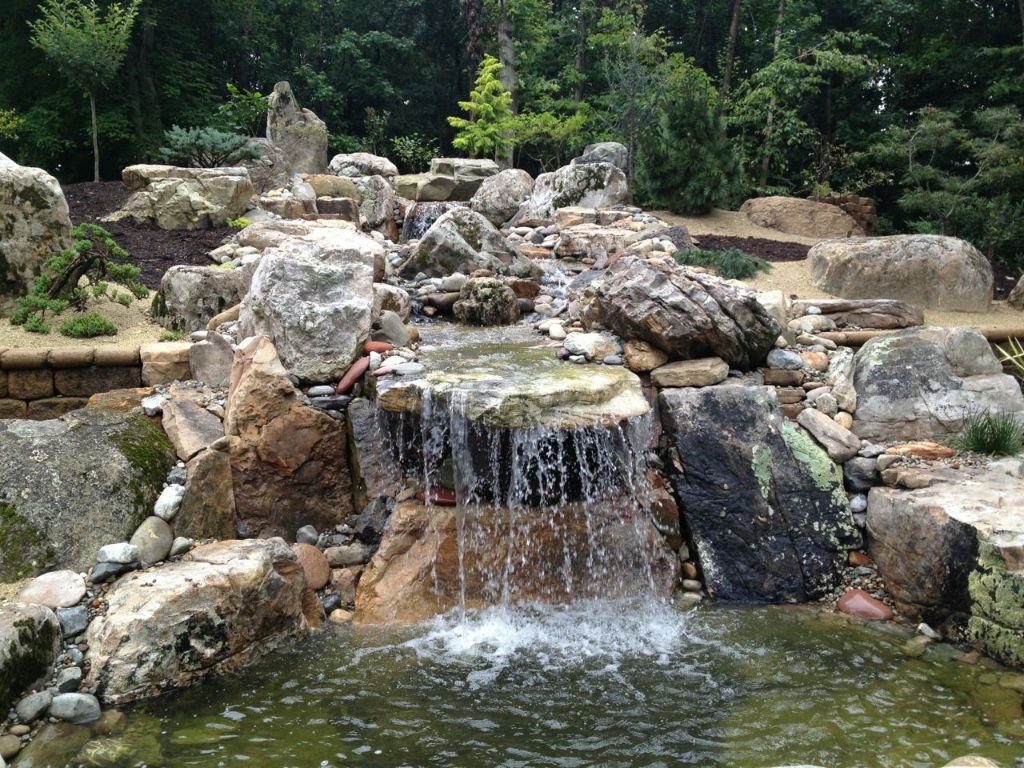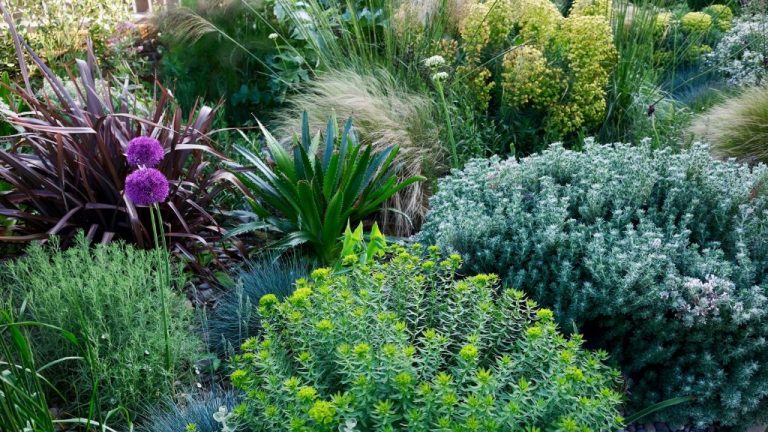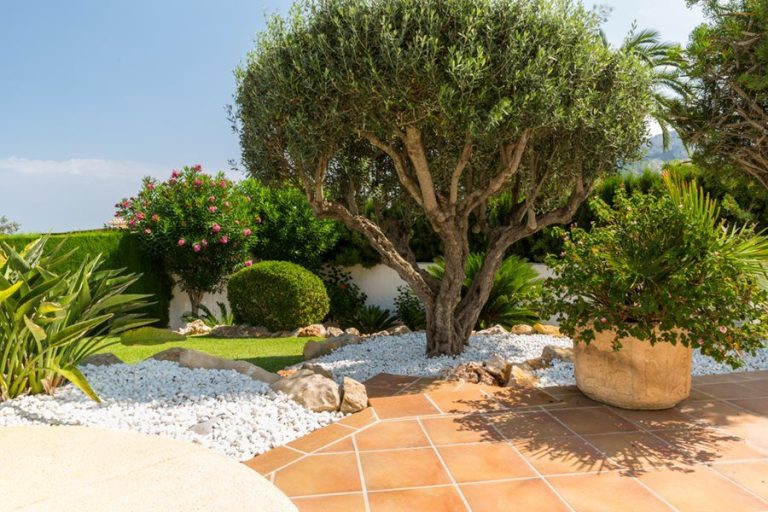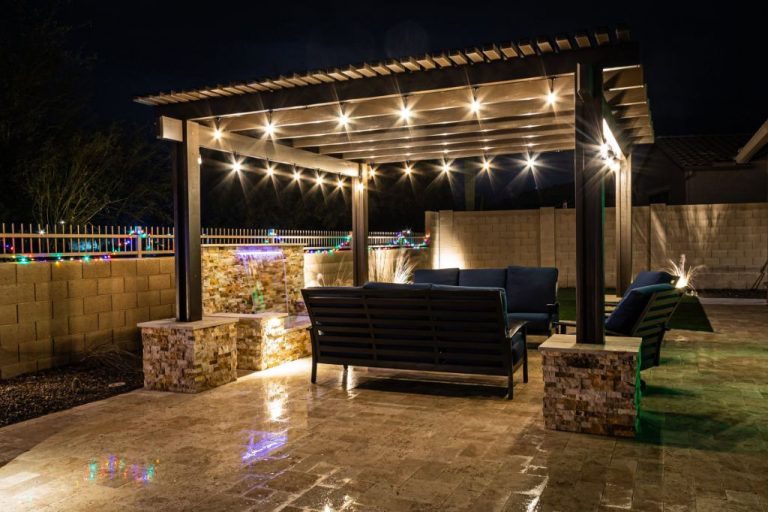Incorporating Water Features Into Your Landscape Design
Water features like ponds, fountains, and waterfalls can greatly enhance the beauty and tranquility of any landscape or garden. Incorporating water into your landscape design provides numerous benefits. The pleasant sounds of moving water create a relaxing ambiance while the shimmering surface reflects light and adds sparkle and movement. Water features attract wildlife like birds, dragonflies, and frogs that add color, sound, and activity. They also help cool the surrounding air through evaporation. Well-designed water features can significantly increase property value. With proper planning and maintenance, water features can become a gorgeous focal point that transforms your outdoor living space.
Types of Water Features
There are many types of water features that can be incorporated into landscape designs. Some popular options include:
Ponds – These can be simple container ponds or more elaborate installations with aquatic plants, fish, and decorative rocks. Ponds create spaces for wildlife and pleasant natural sounds from trickling water. They require more maintenance than other water features (Source 1).
Fountains – Decorative fountains come in endless shapes and sizes, from tabletop fountains to towering multi-tiered monuments. The soft sounds of flowing water create a relaxing ambiance. Fountains can be powered by electricity or solar panels (Source 2).
Waterfalls – Waterfalls can be designed to flow over garden walls, rocks, or artificial structures. The white noise masks unwanted sounds and provides a dramatic focal point. Waterfalls require pumps to recirculate the water and careful design to prevent erosion (Source 3).
Design Considerations
When incorporating a water feature into your landscape design, there are several important factors to consider regarding placement, size, and style:
Placement – Consider where to position the water feature in your yard. Place it near seating areas so the soothing sounds can be enjoyed up close. Ensure it will get sufficient sunlight without being obscured by other plants or structures. Position it where it can be easily viewed from inside the home as well. According to the Washington Post, “Locate your water feature where you’ll see it and hear it from different vantage points in your yard” [1].
Size – Decide on an appropriately sized water feature for your space. Larger yards can accommodate bigger ponds and fountains, while smaller spaces may be better suited for container water gardens or tabletop fountains. Make sure to consider your budget as larger water features require more materials, maintenance, and installation work. Homesandgardens.com recommends to “start small and simple” when adding your first water feature [2].
Style – Select a style that fits your landscape design and preferences. Formal gardens may suit stately tiered fountains while more natural spaces are complemented by informal ponds. Contemporary or Asian-inspired designs can incorporate modern water walls. There are many creative water feature styles to explore like rain chains, recirculating falls, or reflecting pools.
Materials
The most common materials used to construct outdoor water features are concrete, natural stone, and plastic liners. Concrete is an affordable and versatile option that allows you to mold it into any shape imaginable. It’s durable, easy to maintain, and available in a variety of colors. Natural stones like slate, granite, and limestone add elegance and a natural look. The texture and colors of natural stone complement any landscape. Plastic liners made of PVC or other polymers create a waterproof basin to hold the water. Liners come in a variety of shapes and sizes to fit any water feature design.
According to Getpond.com, “Granite is one of the ideal building materials for outdoor water fountains. Granite comes in various grey tones, making it elegant and natural-looking.” The article advises using a granite sealer to protect the stone. Majestic Fountains recommends natural stones like granite, marble, and slate for their durability and natural beauty.

Plastic liners provide a economical waterproof solution. PondandGardenDepot.com offers a variety of liner sizes and shapes for constructing ponds and other water features. The website states, “Add a little extra WOW factor to your garden or landscape with a water feature, bubbler and garden water feature kits provide a quick and economical solution for stunning water features. Liners and underlayment provide the base to create ponds, waterfalls and fountain basins of any shape and size.”
Plants and Fish
When choosing plants and fish for your water feature, you’ll want to select species that are well-suited to your climate and the water conditions in your pond or fountain. Some key factors to consider are:
For plants, choose a mix of floating varieties like water lilies that provide shade and oxygen, as well as submerged oxygenators that help keep the water clean and prevent algae growth. Popular choices include water lilies, lotus, pickerel plants, iris, cattails, and more.
When selecting fish, opt for hardy species like koi and goldfish that can tolerate your local temperatures. Make sure to choose fish suitable for the size of your pond and factor in their adult sizes. Provide areas for fish to hide and consider adding native fish as they may be easier to care for.
Research your plant and fish choices to ensure they have similar water, sun, and care requirements. Introduce fish after plants are established. Monitor water chemistry and only add species that will thrive in your specific water feature.
Maintenance
Proper maintenance is crucial for keeping water features clean, operating properly, and preventing buildup of algae or bacteria. Regular maintenance tasks include:
Cleaning: Remove debris like leaves or dirt from the water surface daily. Every 2-4 weeks, drain and scrub the surfaces with a soft brush and mild cleanser to prevent mineral deposits and film buildup. Avoid using chlorine or harsh chemicals which can harm fish and plants (Source).
Water Care: Test and adjust chemical levels like pH weekly. Use a fountain cleaner or beneficial bacteria monthly to control algae. Replace a portion of the water every 2-4 weeks. In winter, drain, clean, and cover the water feature if in a climate with freezing temperatures.
Troubleshooting: Check pumps and tubing regularly for blockages or malfunctions. Clean out filters as needed. Use a test kit to check chemical levels if the water appears cloudy or has excessive algal growth. Consult a professional for any major issues with the water feature mechanics or plumbing.
Safety
Water features can provide beauty and tranquility to a landscape, but they also pose safety risks that need to be addressed. Preventing accidents and maintaining an environmentally safe water feature should be top priorities.
To prevent drowning accidents, especially with children, make sure the water feature has gentle slopes and no sudden drop-offs. Fencing around the water feature is recommended for safety. Pondless water features without standing water at the base are safer with small children and pets (1).
Legionella bacteria can grow quickly in stagnant fountain water and cause Legionnaires’ disease through inhalation of water mist. Maintain proper water treatment, cleaning regimens, and water circulation for fountains and features. Consult your local health department for safety guidelines (2).
Use caution with electrical aspects of water features like pumps, lights, and heaters. Inspect electrical cords and connections regularly and use ground fault circuit interrupter outlets. Install features away from power lines.
Select environmentally safe materials for water features, avoiding lead, copper, and toxic chemicals. Research plants that filter water naturally and support wildlife. Introduce native fish species and avoid invasive ornamental varieties.
Costs
The costs of installing a water feature can vary greatly depending on the size, materials, and complexity of the design. Smaller, self-contained fountains or birdbaths may cost as little as $100-$500. More elaborate installations with pumps, plumbing and landscaping can cost $1,500-$8,800 on average according to Homeguide (https://homeguide.com/costs/water-fountain-cost).
When budgeting for a water feature, consider both upfront installation costs as well as ongoing maintenance expenses. The initial investment may be higher for more durable materials like stone versus fiberglass, but this can pay off in lower long-term upkeep. Developing a budget and understanding return on investment can help guide decision-making.
Hiring a professional landscape designer is advisable for larger, customized water features. Their expertise can maximize visual appeal and proper installation. Be sure to get multiple bids and understand what is included. While a pro may cost more upfront, they can also help avoid costly mistakes down the road.
Hiring a Professional
When installing a water feature in your landscape, you’ll need to decide whether to tackle it as a DIY project or hire a professional. Here are some factors to consider:
Hire a professional water feature contractor if:
- The water feature will be large and complex, like a multi-tier pond with waterfalls.
- You need electrical work done, like installing pumps and lighting.
- You want an intricate, customized design.
- You lack the skills, time or physical ability for a major landscaping project.
Consider DIY for:
- Small, self-contained water features like wall fountains or birdbath fountains.
- Pre-formed plastic or fiberglass ponds.
- Landscapes without complex grading or electrical requirements.
- If you have construction skills and enjoy hands-on projects.
Check reviews and examples of a contractor’s previous water features to ensure quality workmanship. Get multiple quotes to compare pricing. Be sure the contractor is properly licensed and insured. Schedule a consultation to discuss your vision and project scope.
For a major investment like an inground pond or waterfall, the expertise of a water feature professional is often worth the cost, ensuring proper installation and avoiding costly mistakes. They can also advise on permits and regulations. Consider a design consultation even for DIY projects.
Conclusion
Incorporating a water feature into your landscape design can transform your outdoor space into an oasis. From simple birdbath fountains to elaborate ponds and waterfalls, water features provide soothing sights and sounds that bring your garden to life. When thoughtfully designed and properly installed, they can enhance the ambiance and elevate the aesthetics of any yard or garden.
When deciding on a water feature, carefully consider the types that best suit your needs, space, and budget. Proper planning of the design elements, required materials, ideal plants, and ongoing maintenance is key to creating a viable, sustainable water feature. While careful Do-It-Yourself installation is possible for smaller projects, complex ponds and waterfalls often benefit from the expertise of a professional landscape designer.
With mindful design choices and proper care, adding a water feature can create an inviting habitat for plants and wildlife, while providing a serene natural focal point for you to enjoy for years to come. Let this new addition bring the splendor of water into your personal sanctuary.






